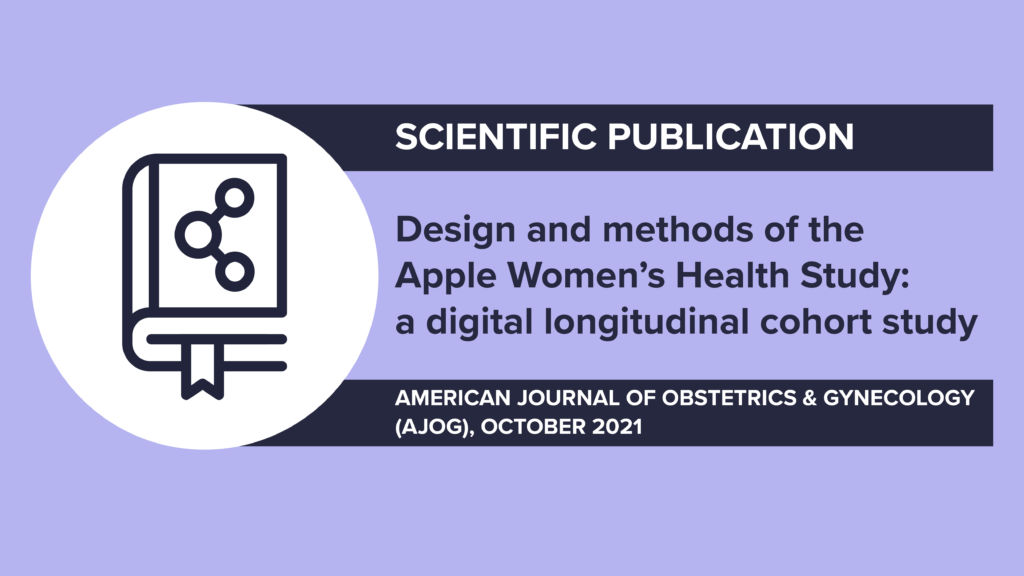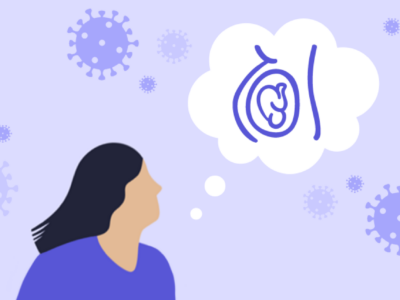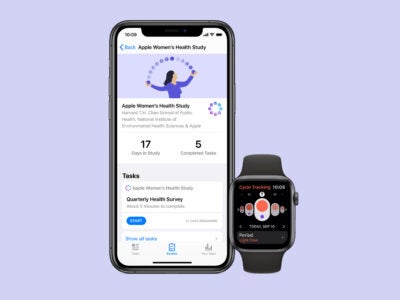
October 2021: The Apple Women’s Health Study’s first paper, “Design and methods of the Apple Women’s Health Study: a digital longitudinal cohort study” sets the stage for future analyses aimed at facilitating discovery in women’s and reproductive health.
Published online by the American Journal of Obstetrics and Gynecology (AJOG), the paper describes the design and methods of the ongoing study and provides demographic characteristics of the first 10,000 participants.
“Our first paper outlines the methodology behind the science of the Apple Women’s Health Study—it describes survey design and cadence, types of data collected, and information about the participant cohort,” says Shruthi Mahalingaiah, one of the study’s principal investigators and an assistant professor at the Harvard T.H. Chan School of Public Health.
“This is just the beginning. We will continue to optimize protocols to collect population-level data that bridges gaps in women’s health research and can be used to improve individual health optimization and clinical care,” says Shruthi.
Participants included in the study have menstruated at least once in their life, currently live in the U.S., use an iPhone, and are 18 years or older. They contribute data by answering surveys through the Research app about their menstrual, reproductive, and overall health.
Participants can log menstrual cycle data, such as bleed days and symptoms, in the Health app. With their consent, this data, along with other sensor data such as step count, heart rate, and sleep patterns, collected on iPhone or their Apple Watch, if they have one, can be shared with the study.
Future analyses from the Apple Women’s Health Study will incorporate high-dimensional data collected through iPhone and Apple Watch, with the goal of identifying population-level trends and better understanding the impact of different exposures on women’s and menstrual health outcomes.
“We’re looking forward to our continued collaboration in support of the Apple Women’s Health Study, and to the scientific contributions the study will make in addressing underrepresented research areas,” says Anne Marie Jukic, Principal Investigator for the Fertility and Reproductive Health Group at the National Institute of Environmental Health Sciences (NIEHS) – part of the National Institutes of Health (NIH).
The Apple Women’s Health Study, is a collaboration between the Harvard Chan School, Apple, and NIEHS. The “Design and methods of the Apple Women’s Health Study: a digital longitudinal cohort study” can be accessed on AJOG’s website.




You must be logged in to post a comment.